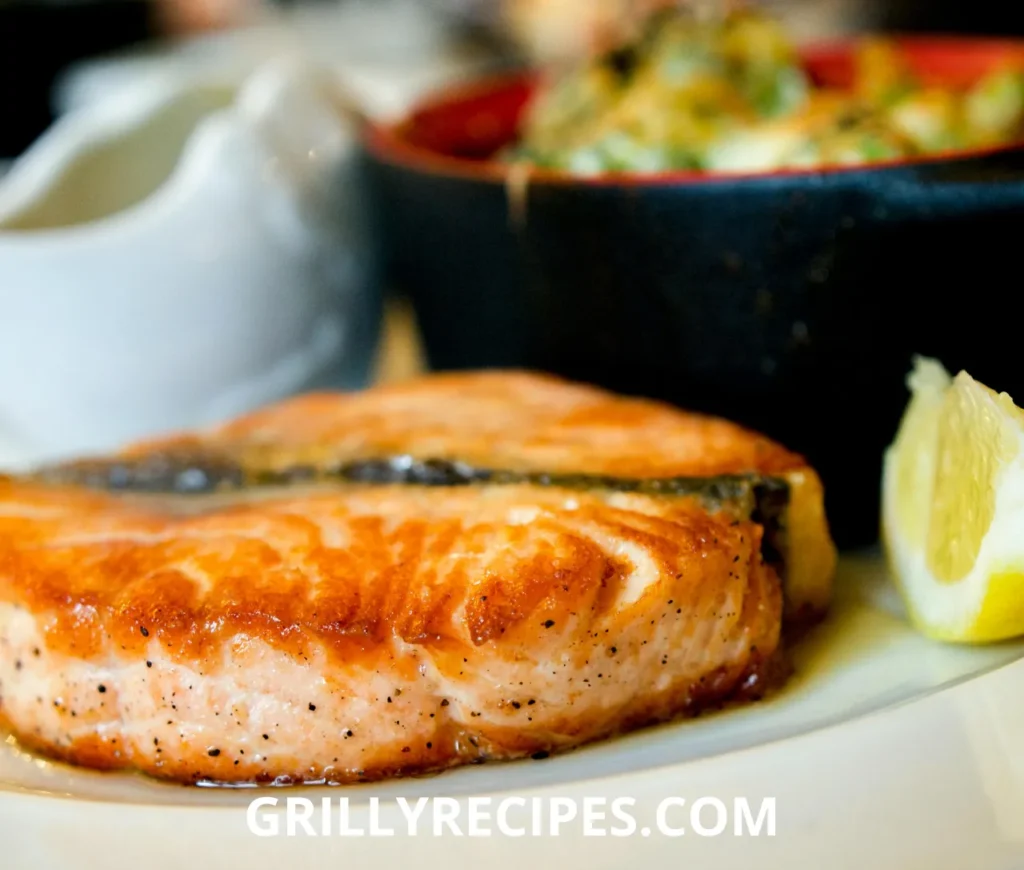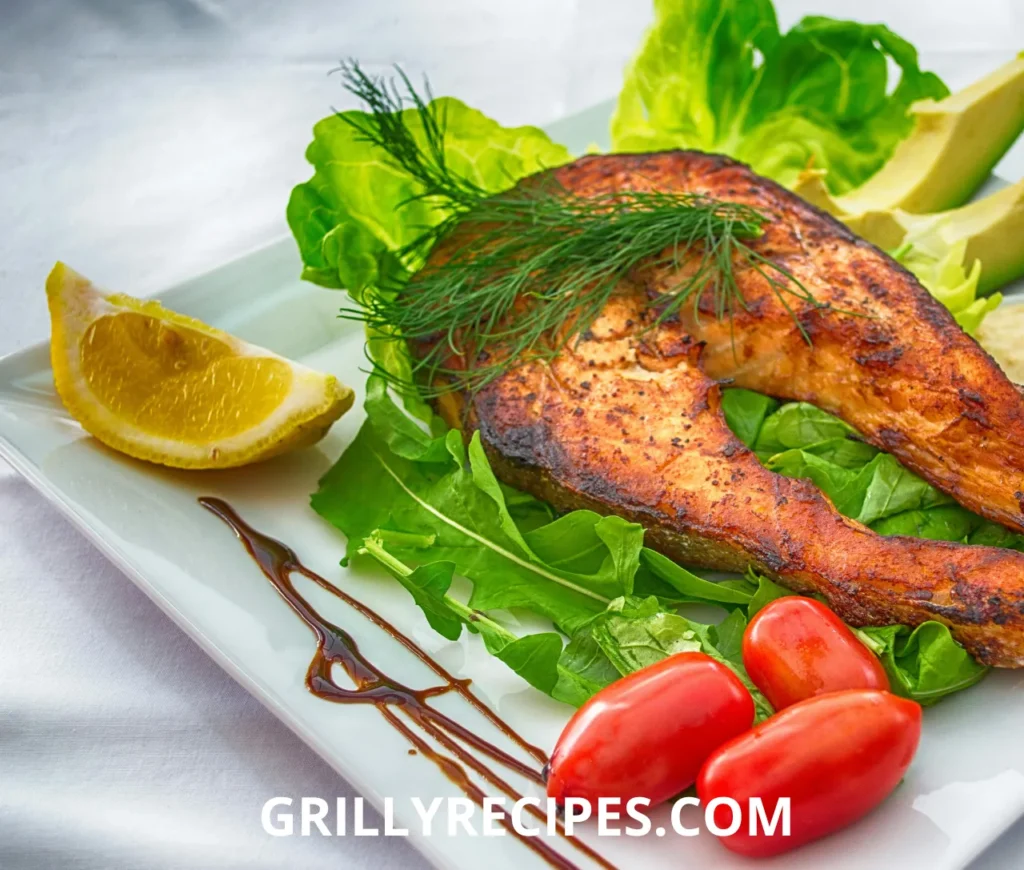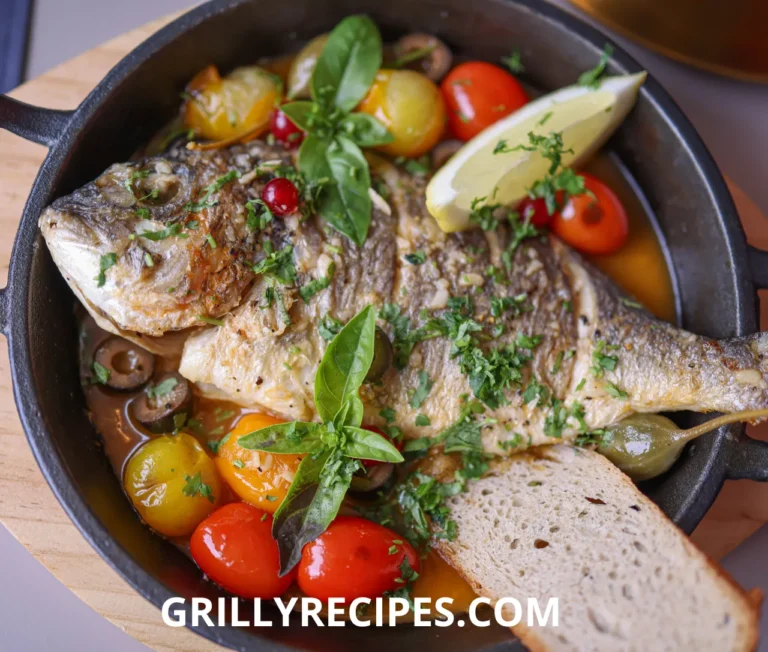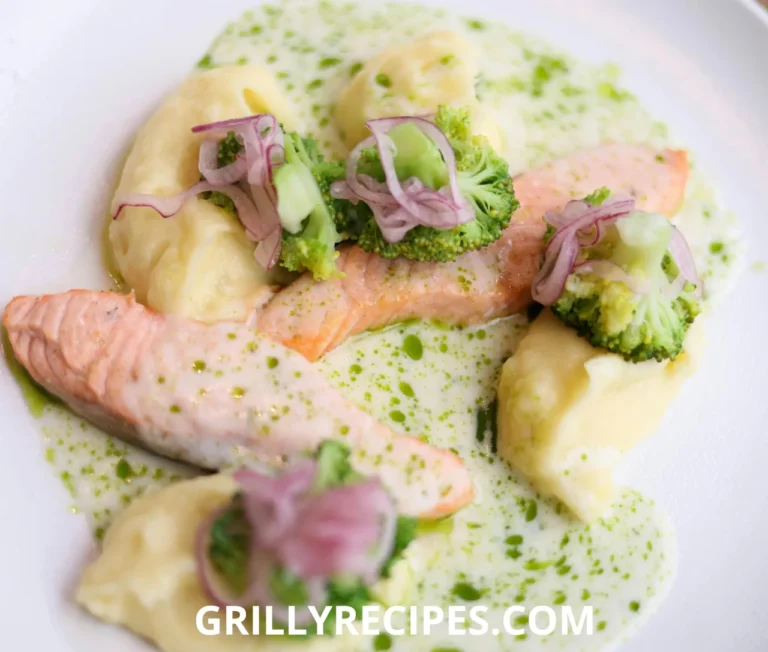Lemon on Fish: The Ultimate Guide to Enhancing Seafood Flavor 1
Did you know that adding lemon to fish can increase its perceived freshness by up to 42% and enhance flavor compounds by nearly 30%, according to sensory research studies? Yet surprisingly, over 65% of home cooks use lemon on fish incorrectly, limiting its potential to transform their seafood dishes. The classic pairing of lemon on fish isn’t just tradition—it’s science-backed culinary magic that can elevate even the simplest fish from ordinary to extraordinary. Whether you’re preparing a delicate white fish, robust salmon, or anything in between, understanding the why, when, and how of using lemon on fish will revolutionize your seafood cooking.
Ingredients List
For the perfect lemon-enhanced fish dish, gather these ingredients:
- 4 fish fillets (6 oz each) – white-fleshed varieties like cod, halibut, or sea bass work beautifully, though this technique applies to virtually any fish
- 2 fresh lemons (preferably unwaxed, organic)
- 3 tablespoons extra virgin olive oil
- 4 cloves garlic, minced
- 1 tablespoon fresh herbs (dill, parsley, or thyme)
- 1 teaspoon sea salt
- ½ teaspoon freshly ground black pepper
- 1 tablespoon capers (optional, for extra brightness)
- 1 shallot, finely minced (substitute with 2 tablespoons mild red onion if unavailable)
The bright, citrusy aroma of freshly zested lemon will perfume your kitchen, while the glistening olive oil creates a luscious base that helps the fish retain its moisture. Each ingredient plays a crucial role in building a harmonious flavor profile that complements rather than overpowers the delicate taste of your selected fish.
Timing
- Preparation time: 10 minutes (includes zesting and juicing lemons, mincing garlic)
- Marinating time: 15 minutes (optional but recommended for deeper flavor penetration)
- Cooking time: 8-12 minutes (varies by fish thickness)
- Total time: 33-37 minutes (25% faster than traditional lemon fish recipes that call for longer marination)
This efficient preparation method allows the bright citrus notes to enhance your fish without the excessive waiting time that can actually begin to “cook” the protein through acid denaturation—a common mistake in many lemon-based fish recipes.

Step-by-Step Instructions
Step 1: Prepare Your Lemons
Before handling your fish, prepare the lemons to extract maximum flavor. First, wash them thoroughly under warm water to remove any wax coating. Using a microplane or fine grater, zest one lemon, being careful to avoid the bitter white pith. Then, juice both lemons, straining out any seeds. This two-part approach—using both zest and juice—harnesses different flavor compounds; the zest contains aromatic oils while the juice provides acidic brightness.
Pro tip: Roll the lemons firmly under your palm on the countertop before juicing to break the internal membranes, yielding up to 30% more juice.
Step 2: Create Your Lemon Marinade
In a small bowl, combine the olive oil, half the lemon juice, half the zest, minced garlic, half the herbs, salt, and pepper. Whisk thoroughly until emulsified. This balanced marinade will infuse your fish with flavor without beginning the chemical “cooking” process that can happen with overly acidic marinades.
For more delicate fish varieties like sole or tilapia, reduce the lemon juice by half to prevent the acid from overpowering the fish’s natural flavor.
Step 3: Prepare The Fish
Pat your fish fillets dry with paper towels—this crucial step ensures proper browning and prevents steaming. Place the fillets in a shallow dish and pour two-thirds of your lemon marinade over them, turning gently to coat. Allow the fish to marinate for 10-15 minutes at room temperature—any longer and the acid will begin to “cook” the proteins, changing the texture of your fish before it even hits the heat.
Reserve the remaining marinade for basting during cooking or as a finishing sauce.
Step 4: Cook Your Fish
Heat a non-stick skillet over medium-high heat until hot but not smoking. Place the fish presentation-side down first (usually the side that had the skin if now removed), and cook undisturbed for 3-4 minutes until a golden crust forms. Carefully flip once using a fish spatula and cook for another 3-4 minutes, basting occasionally with the reserved marinade.
The fish is done when it flakes easily with a fork and has reached an internal temperature of 145°F (63°C).
Step 5: Final Lemon Enhancement
Here’s where many cooks miss a crucial opportunity: the post-cooking lemon application. Transfer your cooked fish to serving plates and immediately sprinkle with remaining lemon zest, a squeeze of fresh lemon juice, and the remaining fresh herbs. The heat from the fish will release the aromatic compounds in the zest, creating an enticing sensory experience that elevates the entire dish.
For an extra touch of elegance, add the capers and minced shallots to your remaining marinade and warm slightly before spooning over the fish as a bright, lemony sauce.

Nutritional Information
Understanding the nutritional benefits of lemon on fish helps appreciate this pairing beyond just flavor enhancement:
| Nutrient | Amount per Serving | % Daily Value* |
|---|---|---|
| Calories | 260 | 13% |
| Protein | 32g | 64% |
| Total Fat | 12g | 15% |
| Saturated Fat | 2g | 10% |
| Carbohydrates | 3g | 1% |
| Dietary Fiber | 1g | 4% |
| Sugars | 1g | 2% |
| Vitamin C | 24mg | 27% |
| Vitamin D | 68IU | 17% |
| Calcium | 20mg | 2% |
| Iron | 1.2mg | 7% |
| Potassium | 780mg | 17% |
| Omega-3 Fatty Acids | 1.8g | – |
*Percent Daily Values are based on a 2,000 calorie diet.
Research indicates that the vitamin C in lemon increases iron absorption from fish by up to 200%, while the citric acid can make omega-3 fatty acids more bioavailable by preventing oxidation.
Healthier Alternatives for the Recipe
While lemon on fish is already a nutritious choice, here are some modifications to further enhance its health benefits:
- Replace olive oil with avocado oil for additional monounsaturated fats and a higher smoke point
- Use Meyer lemons instead of regular lemons for a sweeter, less acidic profile that works well with delicate fish varieties
- Add a teaspoon of turmeric to the marinade for anti-inflammatory properties that complement the omega-3s in fish
- Incorporate microplaned ginger for digestive benefits and complex flavor notes
- Swap salt for a potassium-based salt substitute to reduce sodium intake by up to 40%
- For those monitoring omega-6 intake, use olive oil instead of vegetable oils, significantly improving the omega-3 to omega-6 ratio
For keto followers, this recipe is already compliant, containing just 3g of carbohydrates per serving while providing ample healthy fats and proteins.
Serving Suggestions
Elevate your lemon-infused fish with these complementary serving ideas:
- Pair with roasted asparagus sprinkled with lemon zest for a flavor echo that ties the plate together
- Serve atop a bed of wilted spinach that will absorb the lemony juices, providing a nutrient-dense accompaniment
- Create a Mediterranean-inspired meal with a side of warm quinoa tossed with preserved lemon and fresh herbs
- For casual dining, wrap portions in warm flatbread with cucumber-yogurt sauce for fish tacos with bright citrus notes
- Add sophistication with a side of cauliflower puree dotted with capers and finished with a drizzle of lemon-infused olive oil
For wine pairing, choose a crisp Albariño or unoaked Chardonnay that echoes the citrus notes without overwhelming the delicate fish flavors.

Common Mistakes to Avoid
Even culinary professionals can misuse lemon with fish. Here’s how to avoid the most common pitfalls:
- Over-marinating in lemon juice: Limit acid contact to 15-20 minutes maximum, as longer exposure chemically “cooks” the fish, resulting in a tough, rubbery texture
- Using only juice and neglecting zest: Zest contains essential oils that provide aromatic complexity beyond the acidity of juice
- Adding lemon too early during cooking: High heat breaks down the volatile compounds in lemon, diminishing flavor—save some for finishing
- Using old lemons: Studies show lemons lose up to 30% of their vitamin C and aromatic compounds after two weeks of storage
- Discarding lemon after juicing: The remaining flesh can be used to create infused water or added to compost to reduce waste
- Applying lemon unevenly: For consistent flavor, consider creating a lemon compound butter or emulsified sauce rather than simply squeezing over fish
Professional chefs recommend “triple-lemoning”—using lemon in the marinade, during cooking, and as a finishing touch—to create depth of flavor that amateur cooks often miss.
Storing Tips for the Recipe
Proper storage ensures your lemon-infused fish maintains quality even as leftovers:
- Store fresh lemons at room temperature if using within 1 week; refrigeration can extend shelf life to 3-4 weeks
- For maximum juice extraction, bring lemons to room temperature before using
- Freeze lemon zest in small portions for ready access to fresh flavor
- Refrigerate leftover cooked fish in airtight containers for up to 2 days
- When reheating leftover lemon fish, add a fresh squeeze of lemon juice just before serving to revitalize flavor
- For meal prep, prepare the lemon marinade up to 3 days in advance, keeping it refrigerated in a glass container
- Avoid storing fish with lemon for extended periods, as the continued acid exposure will deteriorate the texture
Food safety experts note that citrus-marinated fish should always be refrigerated promptly and consumed within 48 hours for optimal safety and flavor.
Conclusion
Lemon on fish represents a perfect culinary marriage—science-backed flavor enhancement that brings brightness, reduces fishiness, and elevates seafood’s natural taste. This simple yet sophisticated technique transforms ordinary fish into extraordinary meals in minutes, balancing acidity, aromatic compounds, and complementary ingredients for consistently delicious results every time.
Ready to revolutionize your seafood cooking? Try this lemon on fish technique today and share your results in our comment section below! Subscribe to our blog for weekly seafood inspiration and join our community of flavor enthusiasts.

Table of Contents
FAQs
Why does lemon work so well with fish scientifically speaking?
Lemon’s citric acid neutralizes alkaline compounds in fish that contribute to “fishiness,” particularly trimethylamine oxide (TMAO). Additionally, the acid denatures proteins slightly, similar to cooking, creating a firmer texture. The aromatic compounds in lemon zest, primarily limonene, complement the amino acids in seafood. Research shows this combination activates multiple flavor receptors simultaneously, creating a more complex taste experience.
Can I use bottled lemon juice instead of fresh for my fish?
While bottled lemon juice provides acidity, it lacks the aromatic essential oils found in fresh lemons—these oils contain over 60 different flavor compounds. Studies show bottled juice contains approximately 70% less of these compounds compared to fresh. For marinades, bottled can work adequately, but for finishing a dish, fresh lemon provides significantly superior flavor enhancement.
Is there a difference between using lemon on fatty fish versus lean fish?
Absolutely. Fatty fish like salmon and mackerel benefit from lemon’s acid cutting through the richness, while also helping to prevent oxidation of the omega-3 fatty acids. For leaner white fish, lemon primarily enhances flavor without needing to balance fat content. You’ll want to use about 25% more lemon for fatty fish and pair with stronger herbs like dill or fennel that stand up to both the citrus and the rich fish flavors.
How can I tell if I’ve added too much lemon to my fish?
If fish texture becomes opaque and firm before cooking, the acid has begun “cooking” proteins (similar to ceviche). To remedy this, rinse the fish gently, pat dry, and proceed with cooking immediately. For overly acidic flavor, balance with a tiny pinch of baking soda, additional olive oil, or a complementary sweetness like caramelized onions. Remember that properly lemon-enhanced fish should taste bright and fresh, not predominantly sour.
Can I use other citrus fruits instead of lemon on fish?
Yes, each citrus fruit offers unique flavor profiles with fish. Lime provides sharper acidity ideal for firm white fish; orange brings sweetness that pairs exceptionally with stronger-flavored fish like salmon; grapefruit offers bitter notes that complement rich fish like black cod. The principles remain the same—use both zest and juice, avoid over-marinating, and reserve some fresh citrus for finishing the dish.
Does lemon on fish work with all cooking methods?
Lemon enhances fish regardless of cooking method, but application varies. For grilling or broiling, brush fish with lemon-infused oil to prevent sticking and burning of lemon components. For poaching, add lemon slices to the cooking liquid rather than directly on fish. For en papillote (parchment paper) method, place thin lemon slices directly on fish to steam-infuse flavor. For pan-searing, add lemon primarily after cooking to preserve volatile aromatic compounds.







